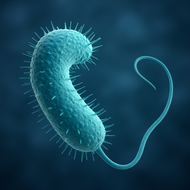Cholera and the Human Body: How a Tiny Bacterium Causes Massive Impact ?
Posted by Lieven Gevaert on 2nd Sep 2025
Introduction
Cholera is not just another waterborne infectionit is a disease that has shaped human history, caused multiple pandemics, and continues to threaten millions of lives today. At its core, cholera is caused by a single microorganism, Vibrio cholerae. Yet, despite its microscopic size, the bacterium is capable of wreaking havoc on the human body in ways that are both rapid and devastating. What makes cholera particularly dangerous is the speed at which it can progress. A healthy person can go from mild discomfort to life-threatening dehydration in less than 24 hours. Understanding how cholera interacts with the body helps explain why it remains one of the most feared infectious diseases in regions without access to safe water and healthcare.
Entry into the Body
The story of cholera begins with ingestion. People typically contract the disease by consuming contaminated water or food, often in areas where sanitation is poor. Once the Vibrio cholerae bacteria enter the digestive tract, they pass unharmed through the stomach and reach the small intestine. Here, they begin to attach themselves to the intestinal lining. Unlike many other infections that invade or destroy tissues directly, Vibrio cholerae relies on a different strategy. Its true weapon is not physical damage but a chemical one: the secretion of cholera toxin, which manipulates the body’s own cellular machinery to trigger illness.
The Cholera Toxin
The cholera toxin is the central factor behind the disease’s destructive power. Once released in the intestine, it interferes with the way cells regulate the movement of salts and water. Normally, intestinal cells carefully balance absorption and secretion to maintain hydration and nutrient levels. However, under the influence of cholera toxin, this balance collapses. The toxin locks the cells into a state of continuous secretion, pushing out massive amounts of water and electrolytes into the intestinal lumen. This uncontrolled flood is what produces the distinctive, watery diarrhea associated with cholera. In extreme cases, a patient can lose more than a liter of fluid per hour a rate that no body can sustain without intervention.
Effects on the Human Body
The rapid fluid loss caused by cholera has dramatic consequences on the human body. As dehydration sets in, patients experience intense thirst, muscle cramps, and weakness due to electrolyte depletion. The skin may lose its elasticity, the eyes may sink, and urine output often drops to nearly nothing. If the condition continues without treatment, blood pressure plummets, circulation weakens, and shock develops. Eventually, vital organs such as the kidneys and heart begin to fail. This entire progression can unfold frighteningly fast sometimes leading to death within hours of the first symptoms. The sheer speed and severity of the disease make cholera one of the most dangerous infections known.
Treatment and Recovery
The good news is that cholera is highly treatable if addressed promptly. The cornerstone of treatment is oral rehydration therapy (ORT), a simple solution containing salts and glucose that helps the body absorb fluids more efficiently. This low-cost intervention has saved millions of lives worldwide. For patients who cannot drink or are severely dehydrated, intravenous fluids restore lost volume and stabilize circulation. Antibiotics may also be given to shorten the duration of diarrhea and reduce bacterial shedding, though they are not always necessary. The critical factor is speed: the earlier rehydration begins, the higher the chances of full recovery. With timely care, most cholera patients can recover completely within days.
Research and Innovations in Fighting Cholera
Modern science is exploring advanced tools to better detect and understand Vibrio cholerae. One such tool is the Recombinant Vibrio cholerae Serotype O1 30S Ribosomal Protein S8 (rpsH). This protein is a key component of the bacterial ribosome, essential for protein synthesis and bacterial survival. By producing it recombinantly, researchers can develop highly specific antibodies and diagnostic assays that detect cholera bacteria more accurately in both clinical and environmental samples. Such innovations not only improve early diagnosis but also aid in monitoring outbreaks, evaluating treatment effectiveness, and advancing vaccine and drug research. Tools like rpsH represent the cutting edge of cholera research, linking molecular biology directly to public health solutions.


